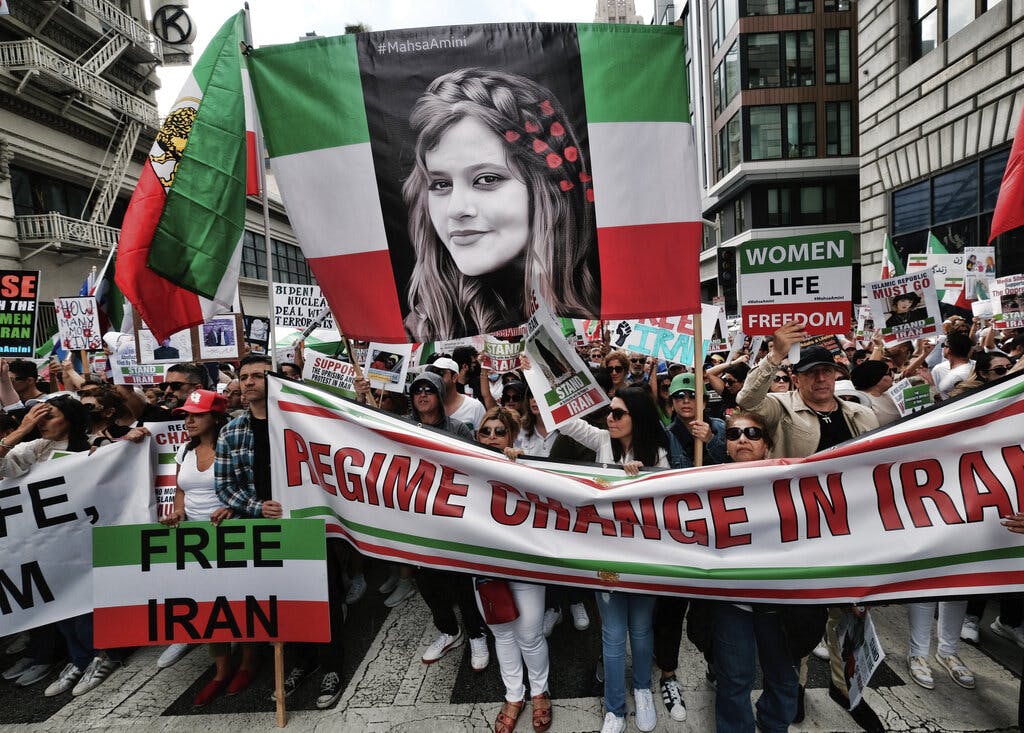Iranian Protesters Torch Former Home of Supreme Leader
The house-turned-museum in Khomein belonged to the Islamic Republic’s founder and was apparently set on fire using gas bombs.

Iranian protesters have set fire to the one-time home of the country’s former supreme leader, Ayatollah Ruhollah Khomeini, according to multiple reports.
The house-turned-museum in Khomein, the notorious mullah’s hometown in the western Markazi province, belonged to the Islamic Republic’s founder and was apparently set on fire using gas bombs, as videos widely shared on social media showed.
Khomeini was born at the house at the turn of the century. The firebrand cleric was sharply critical of the American-backed shah, Mohammed Reza Pahlavi. He moved into exile but then returned to Iran from France in 1979 to lead the Islamic Revolution. He became the stern, bearded face of Iran’s revolution and, following the Iran hostage crisis, one of the most widely reviled political figures in the world.
The Agence France-Presse verified the house shown ablaze late Thursday, with crowds of jubilant protesters marching past, to be the one that belonged to Khomeini. The incident marks a dramatic escalation in nationwide protests over the death of 22-year-old Mahsa Amini, while in custody of the so-called morality police. The protests are now entering their third month. According to Al Arabiya, protesters outside Khomeini’s house were heard chanting, “This year is the year of blood,” and that the current supreme leader, Ali Khamenei, “will be toppled.”
The AFP noted that images of Khomeini have on occasion been torched or defaced by protesters, in taboo-breaking acts against a figure whose death is still marked each June with a holiday for mourning.
The protests sparked by the death of Amini pose the biggest challenge from the street to Iran’s leaders since the 1979 revolution. The unrest has been fanned by anger over the brutal enforcement of the mandatory hijab law, but has grown into a broad movement against the militant theocracy that has controlled Iran since the 1979 Islamic Revolution.
There is growing speculation that the current Iranian leadership could try to crush the protest movement in the same way it acted in November 2019, when according to Amnesty International security forces killed at least 304 people. As the regime has been unable to suppress protesters for the past two months, it is widely expected it will turn to more violence in an attempt to do so.
Euronews reported that this week’s protests also coincide with the third anniversary of “Bloody Aban,” or Bloody November, when hundreds were killed in a crackdown on street violence that erupted over a shock overnight decision to hike fuel prices.
The website said that security forces on Thursday killed one protester in Bukan and two in Sanandaj, where mourners were paying tribute to “four victims of the popular resistance” 40 days after they were slain, according to the Oslo-based Hengaw rights group.
It was not immediately clear on Friday if the house at Khomein was burned to the ground, nor what the response from the Iranian authorities would be. The semi-official Tasnim news agency denied Khomeini’s house was set on fire, but by Friday not only the AFP but also Reuters had verified the location of two video clips of the fire, using the distinctive arches and buildings that match file images of the Ayatollah Ruhollah Khomeini’s ancestral abode.

